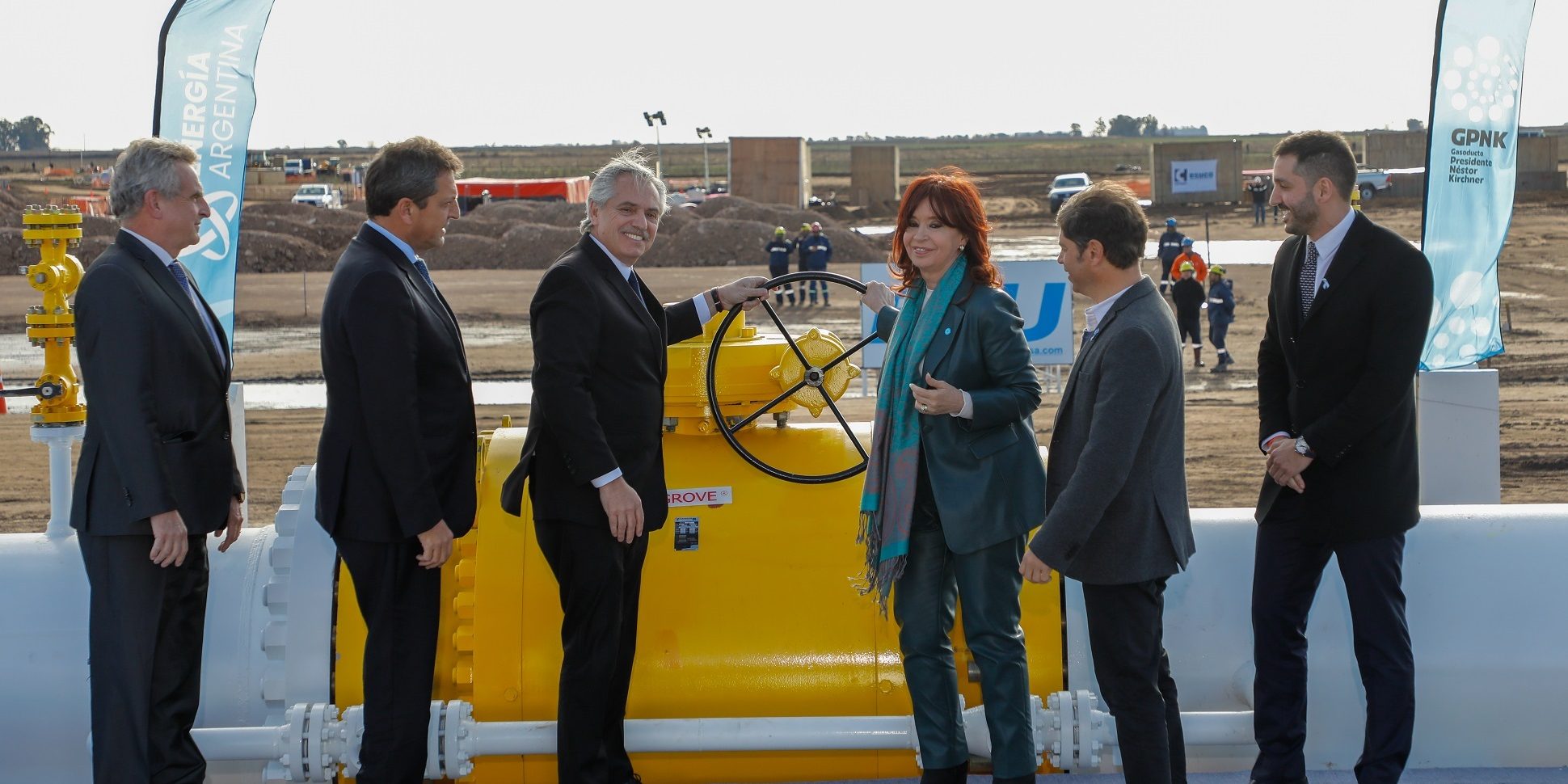The President of Argentina Alberto Fernández led in the Buenos Aires city of Salliqueló, together with Vice President Cristina Fernández, and Minister of Economy Sergio Massa, the official inauguration of the President Néstor Kirchner Gas Pipeline (GPNK), the most important infrastructure work of the last 40 years planned by the national State to achieve the energy self-sufficiency of the country and the change of its productive matrix.
The first section of the GPNK, which was enabled to operate since July 9, after completing the homogeneous filling of the entire pipeline with natural gas, extends over 573 kilometers from the gas compression plant in Tratayén, province of Neuquén , to the plant in Salliqueló, Buenos Aires, passing through Río Negro and La Pampa.
The president remarked that “there is no possibility for a country to develop if the State is not present carrying out the works that are needed,” and there are no sources of work.
Regarding the inaugurated work, the vice president highlighted that, in addition to seeking to export the resource, “we want gas and oil so that our industry is more competitive, and also gas for Argentine households, because it is not fair that if we have the second shale gas reserve in the world and the fourth in oil, they want to charge us at dollar prices”.
Moreover, Minister Massa announced that in September a tender will be called for the second section of the gas pipeline that will go from Salliqueló to San Jerónimo, in Santa Fe, to “finish supplying the Argentine coast and also begin to export via southern Brazil,” which will consolidate the energy sector as the second generator of foreign currency for the country, in addition to definitively directing Argentina towards energy sovereignty.
This engineering work planned by the state-owned company Energía Argentina SA (ENARSA), which generated 50,000 jobs and was built in record time, used state-of-the-art technology in the world to weld the 47,700 pipes of the gas pipeline, whose route crosses 85 special crossings of rivers, roads, power lines and railways between the four provinces.
The construction of the GPNK had the participation of the UT, made up of the national private companies Techint and Sacde, in charge of 440 km of the work, and BTU in charge of the remaining 133 km, in a great display of public private logistics coordination that reduced from 24 to 10 the months of execution.
The two GPNK compression plants, Tratayén and Salliqueló, will allow the transport capacity of natural gas produced in Vaca Muerta (the second largest unconventional gas reserve in the world) to be increased to 21 million m3 per day to the consumption centers in the Argentina. They will also help to supply industrial, commercial and household demand in the country at competitive prices, with foreign currency savings of USD 4,200 million a year, due to the substitution of imports of this resource.
Source: Argentine Presidency







